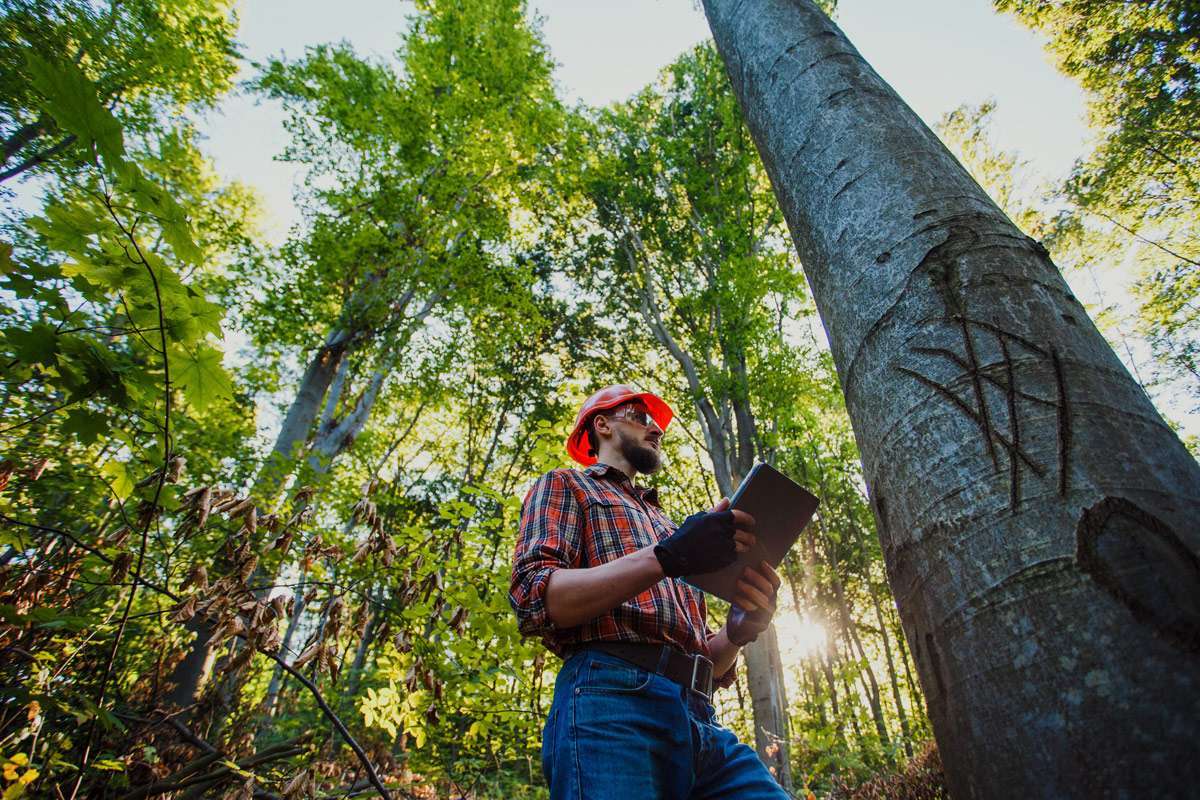As the world moves towards paperless environmental inspection solutions, stakeholders are continually acknowledging the benefits of these technologies in total process optimization.
Digitization enables organizations to meet environmental standards and regulations efficiently and to utilize real-time data collection and analysis through processes like change detection.
In this guide, we discuss why existing technologies are ineffective as well as new, better ways of performing and automating environmental inspections through inspection management software and workflow automation. The aim is to help you apply these new strategies to your business or industry.
What is an Environmental Inspection?
An environmental inspection refers to the process of checking whether an organization complies with environmental laws and regulations.
During an environmental inspection, the inspector will check whether an organization aligns its operations with the existing environmental permits. Common focus areas of an environmental inspection are waste management, hazardous waste management, as well as water and air quality assessments.
In the mining industry, environmental assessments help minimize negative environmental impacts on mine sites. Such activities can help in the management of waste materials that cause harmful environmental consequences, the protection of water and land assets, the sustenance of environmental biodiversity, as well as other related long-term benefits.
Aligning inspections with relevant environmental regulations makes all these possible.

Steps Taken During an Environmental Inspection
Every environmental inspection process takes place in four distinct stages—planning, the formulation of the execution framework, execution and reporting, and performance monitoring.
We explain each stage below in detail.
Planning
The planning stage sets the pace for the inspection process. The following substages involved during planning include:
- Describing the context. The primary activities involved here are scope setting and context definition. It is important to align the context with the inspection goals and objectives.
- Priority setting. The next process is defining all the risks that the environmental inspection process poses. The inspector will state whether a certain risk is high, medium, or low.
- Setting objectives and strategies. The inspection objectives are the set of goals that will then be measured at the end of the inspection process. It is important that you state how you plan to comply with the relevant environmental regulatory requirements.
- Planning and review. The final planning state entails defining the schedule and plan that the team will follow. It is crucial to detail the objectives and to define the conditions that it will take for the inspection to be completed. You can then monitor progress as you continue.
Formulating the Execution Framework
These include sets of essential instructions and protocols. The incorporation of effectiveness, professionalism, and consistency is vital.
Execution and Reporting
This is the actual execution. At this stage, the inspectors will assess the premises based on the predetermined protocols.
After the inspection is complete, the next actions are data collection, review, and analysis. This information helps in formulating reports, which then helps determine whether the inspector will issue the compliance certificate or whether a revision of the existing one is necessary.

The Ineffectiveness of Existing Environmental Inspections Methods
Organizations can undertake environmental inspection procedures using various methodologies. The most commonly used are the following:
Paper and Spreadsheets
Paper-based safety programs have been the go-to option for most organizations. However, the need to constantly acquire and organize paperwork can become long and tiresome for most safety professionals.
The solution to this pain point is shifting to a paperless solution. Such a shift would definitely help organizations save time and money since all the data can be stored digitally.
Paperless solutions also help automate inspection workflows in ways that enhance process efficiency and administration. Digitally organized data becomes easier to retrieve, analyze, or duplicate across systems.
Fragmented Technology/Software
Fragmented environmental inspection software is a software solution that stores data in different locations instead of contiguous spaces. Such methods are inefficient since storage use is not maximized. They can also degrade inspection performance from time to time.
Another level of inefficiency occurs when an organization uses different inspection software options instead of going for a single integrated solution. When this occurs, the level of data quality can become unreliable.
Some Modern Solutions to Environmental Inspection
Some modern workflow methods have emerged as more organizations move towards paperless environmental inspection methods.
Most of these modern solutions have the following capabilities.
- The ability to use customized environmental inspection checklists that allow companies to monitor water quality, environmental compliance, air quality, non-hazardous mining waste, waste discharges, erosion, and sediments, and to integrate emergency management within mining sites. The major disadvantage is the non-comprehensiveness of these digital checklists, which can reduce efficiency.
- The provision of building inspector checklists that aid in building inspection and that can be shared across multiple devices. The challenge here is the inability to apply these solutions in other sectors, such as mining, where more complex environmental monitoring processes are necessary.
- Digital-based environmental compliance solutions that leverage data collection and integration. While these can be ideal, most cannot be utilized across multiple sectors.
The Solution: Gruntify Technology for Environmental Inspections
Gruntify is a software solution that integrates environmental inspection, asset management, job scheduling, workflow automation, and geospatial capabilities. Using Gruntify’s technologies, you can optimize existing workflows, and improve productivity, while reducing costs and enhancing monitoring and conservation outcomes.
The following are Gruntify’s main capabilities:
- Asset management. You become better placed to track asset performance, plan for maintenance, and supervise your assets in a process that can be customized for your organization.
- Automated job management. Automate every job along the inspection process in a way that helps you eliminate manual scheduling, enhance consistency, automate workflows, and foster security and integration.
- Smart mobile forms. These allow you to digitize your field operations in a paperless process that enhances competence.
- Geospatial technology. Gruntify software is also equipped with GIS and location data capabilities. One of the benefits is the change detection functionality that allows you to use satellite imagery taken over time using various spatial data attributes to track environmental changes.
Note: With the change detection capability, you can track erosion and ecological impact. Examples of assessment areas are mangrove clearing and removal, flora and fauna damage, and impact from soil and crop poisoning from nearby mine sites.
Gruntify can ingest and monitor this data from satellite imagery and on-the-ground inspections. Our technology can also use workflow automation to schedule inspections and work orders as required.
Bottom Line
In this guide, we show the ineffectiveness of existing environmental inspection technologies and how your organization can benefit from Gruntify’s inspection management and workflow automation technology.
Our environmental inspection workflow solution has change detection capabilities that can help your organization automate the environmental inspection process to streamline your mining or construction operations with compliance requirements.
Contact us today for a demo or to sign up for a free trial.
